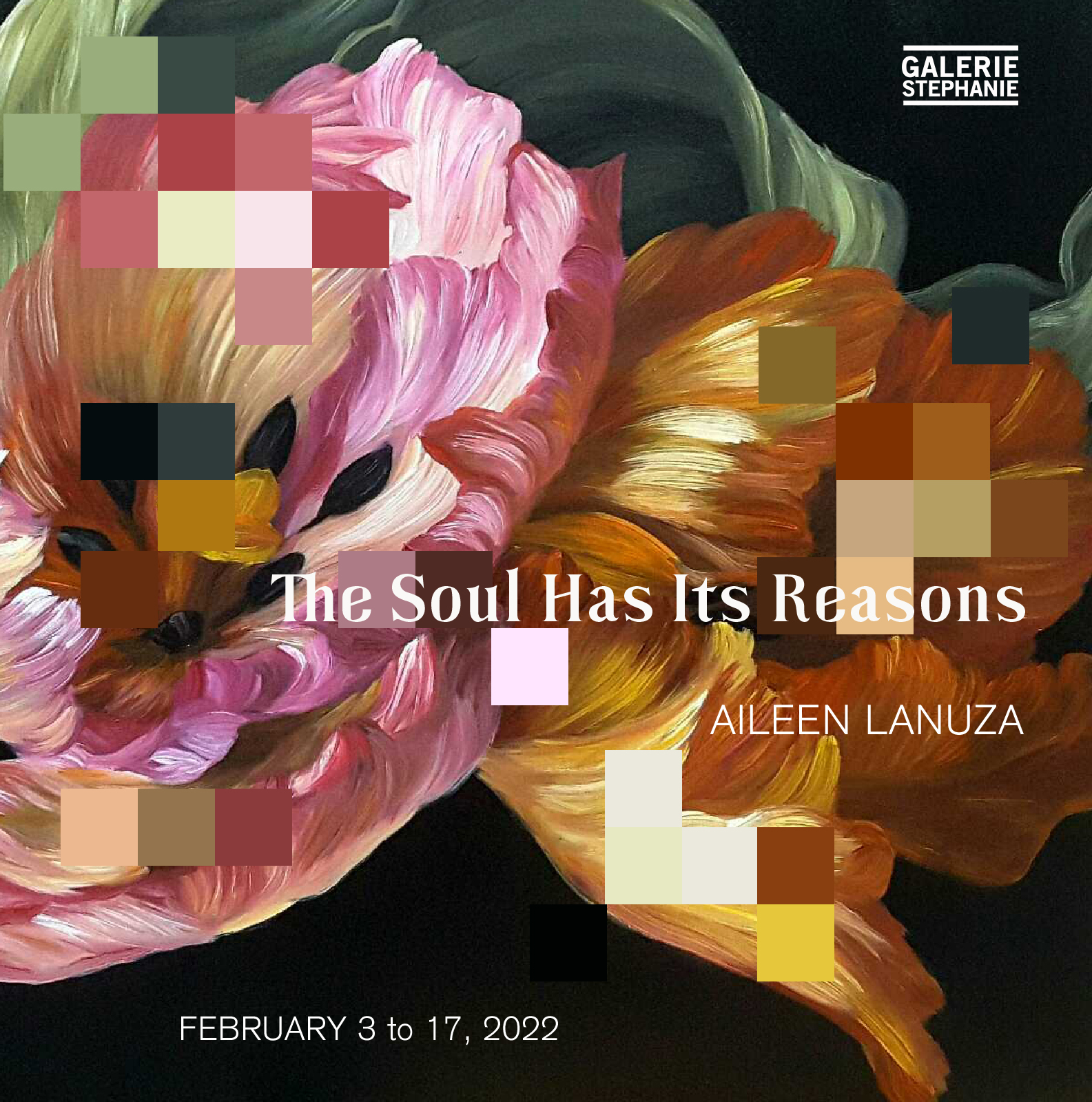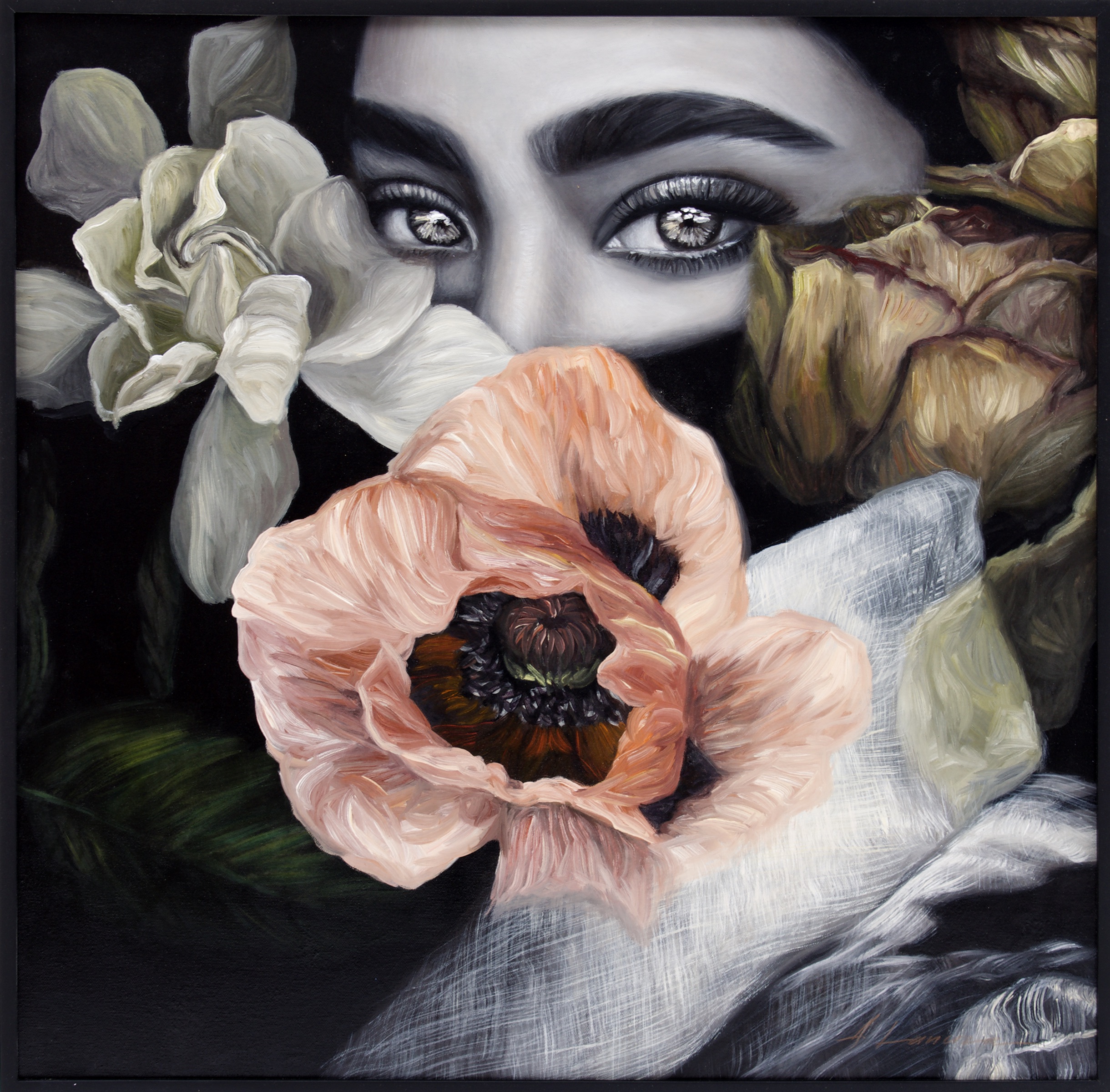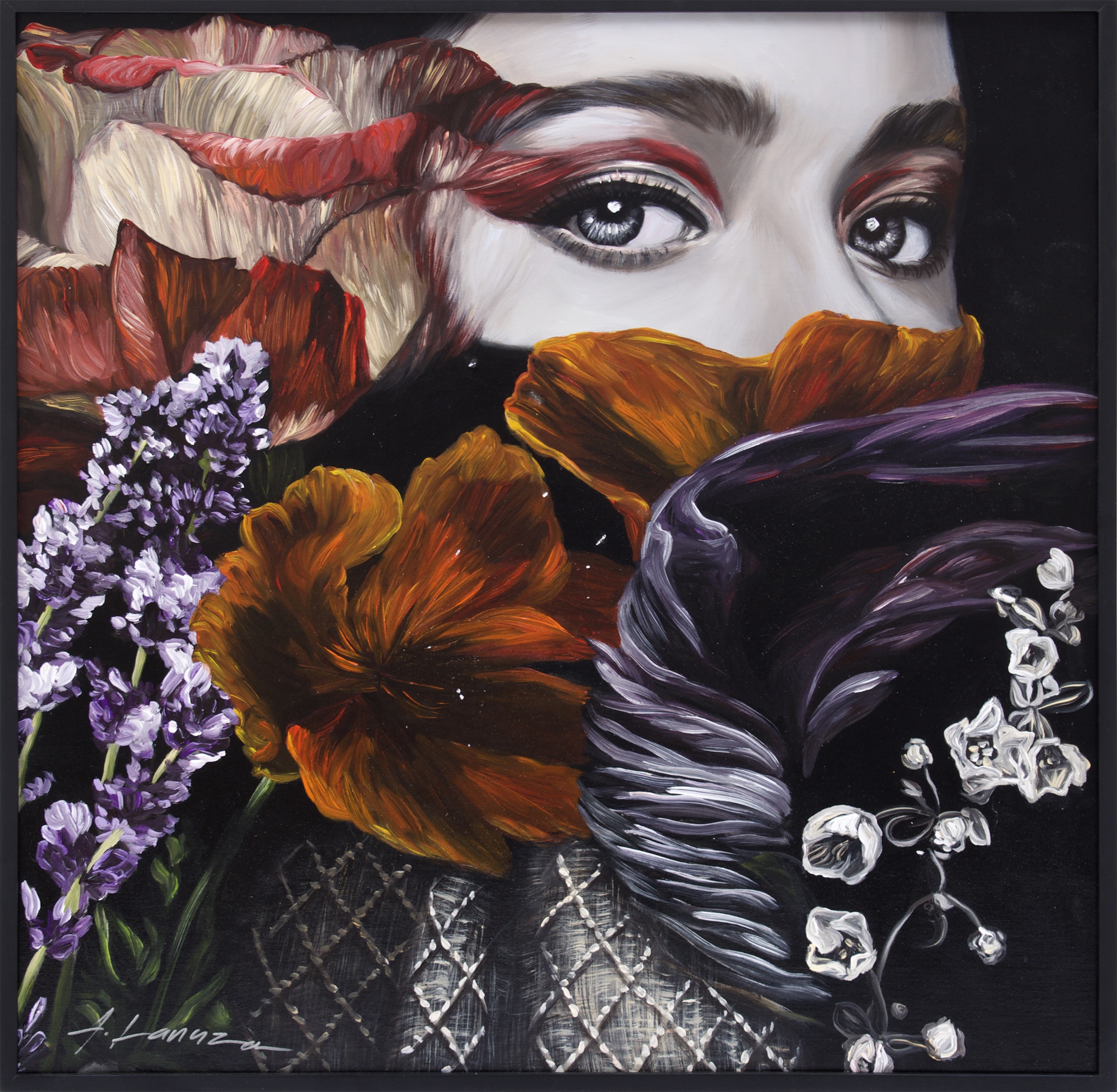“Out of the night that covers me, black as the pit from pole to pole, I thank whatever gods may be, For my unconquerable soul…”
Visual artist Aileen Lanuza enlivens a garden of connections in her solo show “The Soul Has Its Reasons”. Here, Lanuza plays with both the literal idea of connections through a series of triptychs, quadriptychs and polyptychs in an attempt to convey a continuous narrative of one entity to another. These mix of alluring feminine enshrouded in flowers and of solitary floral arrangements come as interwoven elements of human nature.
The works being in a series evokes a sense of strength in unity and continuity. Through the eyes of her recurring Maria Clara subjects, there lies an unbroken narrative of a graceful and dignified resilience.
The poem “Invictus” by William Ernest Henley best represents the centerpiece of Lanuza’s solo exhibit. This nine-piece polyptych of the same name illuminates through dark backgrounds of flowers and alluring gazes. Like how the artist finds solace in the poem’s words, the works similarly translate a sense of comfort to its viewers. Spanning approximately 24 feet wide in total, “Invictus” creates an unremitting dynamic of strength through connectedness and harmony.
Notable pieces like “Vivere In Sole” (Live In The Sunshine), a serene triptych comprised of warm-colored flowers amidst a white background; and “Moonlight Sonata”, a quadriptych as melodious in its nocturnal charm as its name, also align themselves in Lanuza’s aim to enrich our relationships both with ourselves and others. She shares that these kinds of associations, either in big or small ways, fleeting or lasting, allow us to look at ourselves in retrospect: “The more I understand myself, the more I understand other people.”
This solo exhibition is her way of manifesting that those connections are very much alive and thriving, that part of our individuality is still, in every way, rooted in other people’s just as much as theirs is rooted in ours. She paints souls as floral beings, eclipsing throughout histories and ever-changing societies.
notes by Grace Micah Oreiro






